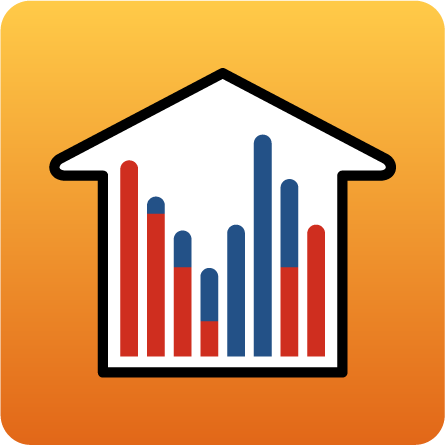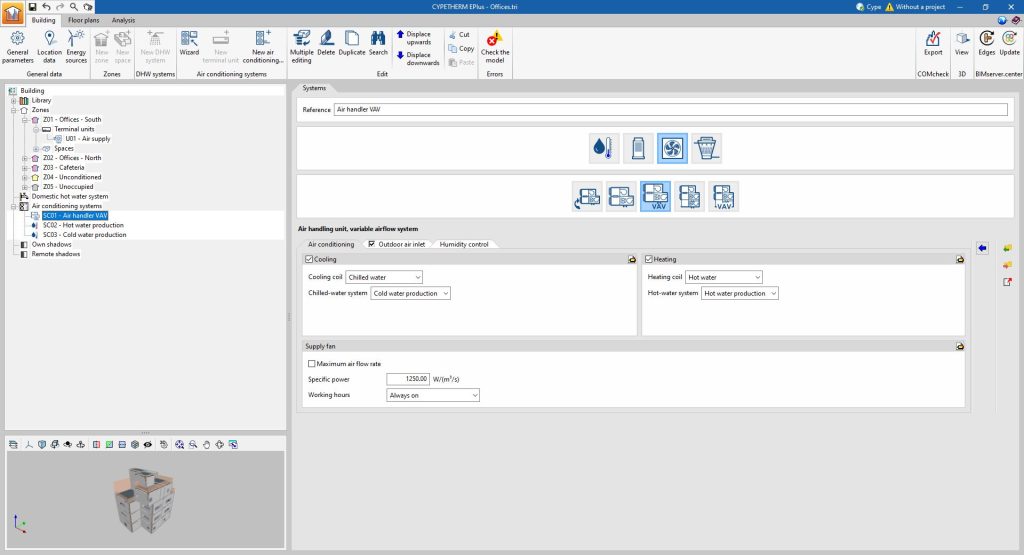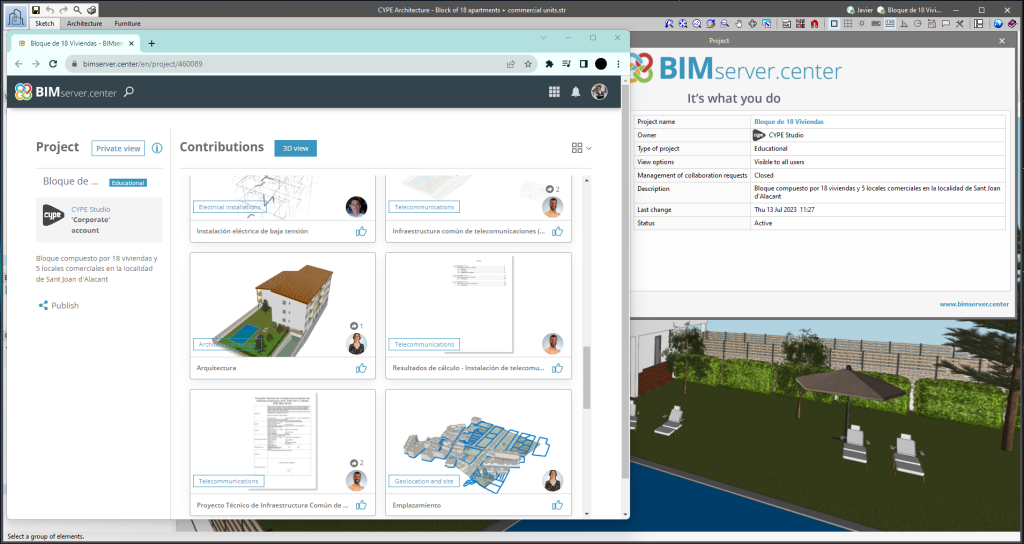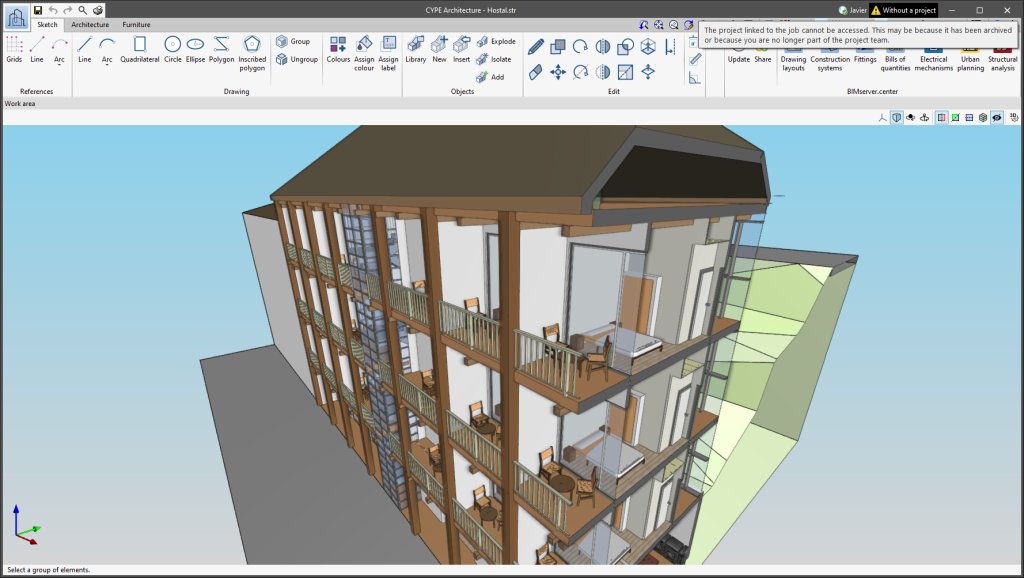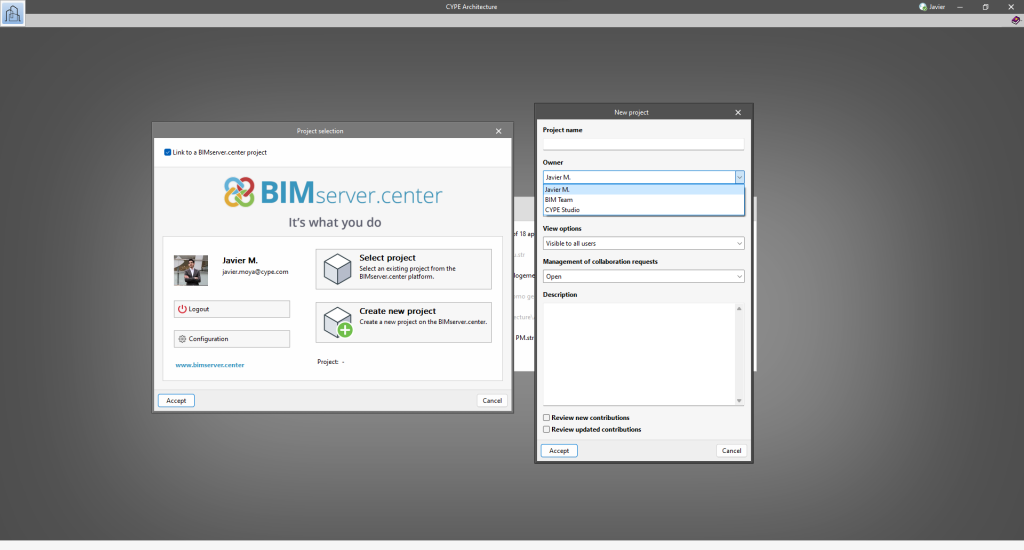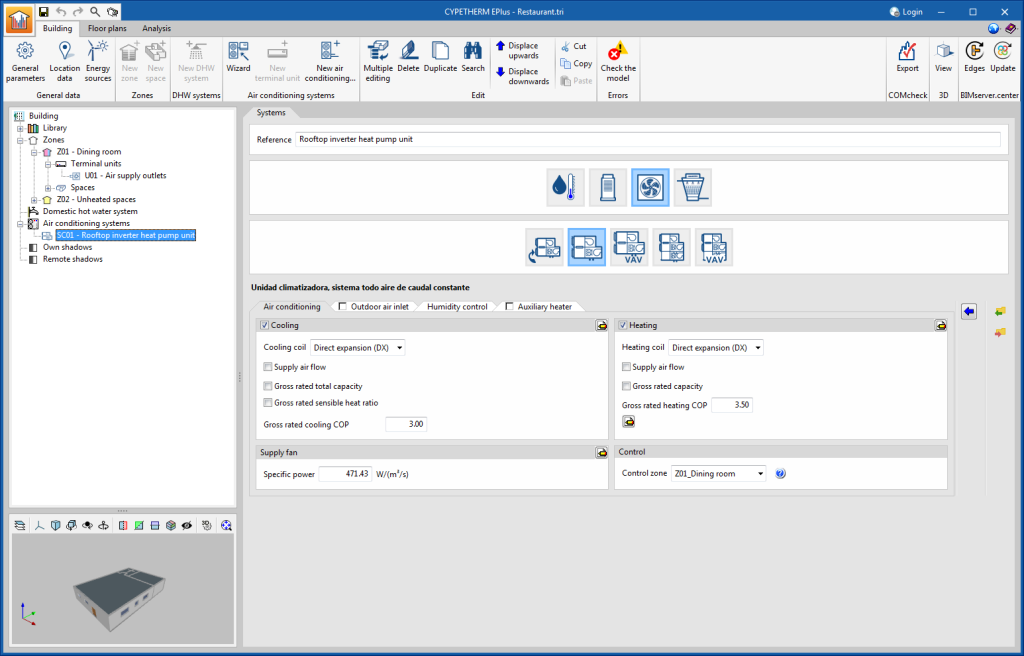As of version 2024.b, it is possible to combine air-air conditioning systems in the same building. The following exceptions remain:
- No more than one constant performance unit can be defined in the same zone.
- No more than one terminal unit with a ventilation function can be defined in the same zone.
- Combinations of air conditioning terminal units associated with different systems in the same zone are not permitted.
In previous versions, when defining air-air-conditioning systems in the building, there were restrictions that prevented placing more than one terminal unit of any type in the same zone or using more than one water-air conditioning system. As a consequence of the improved models for air-air conditioning systems (also implemented in version 2024.b), these restrictions have been removed.


